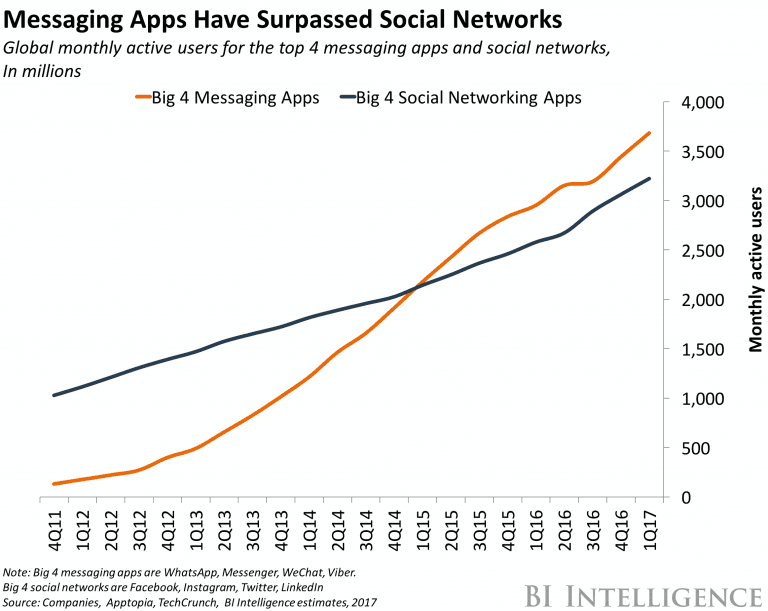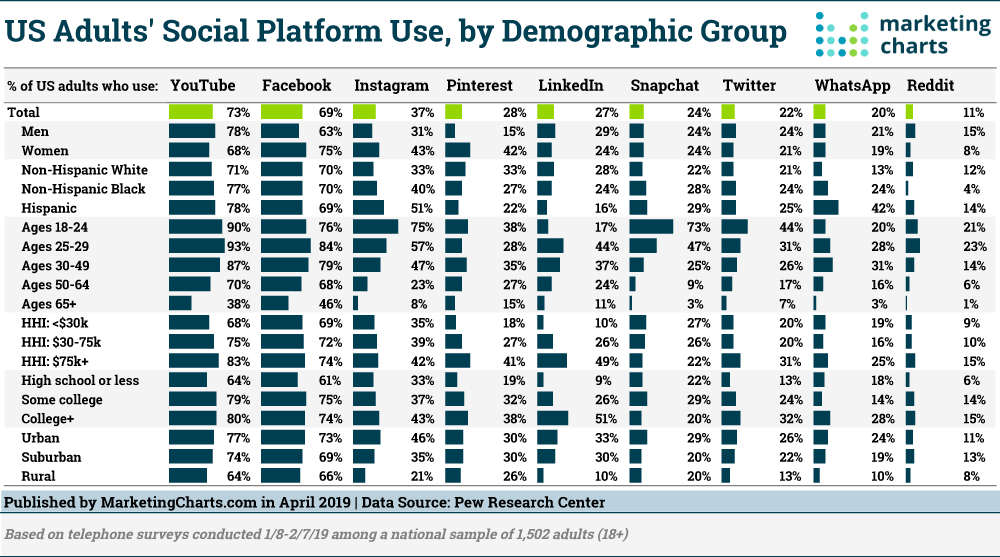What Is Dark Social and How To Measure It
Every brand needs a strong digital strategy, and this ought to include a serious approach to dark social.

“Dark social” is a term coined by Alexis Madrigal in The Atlantic article almost a decade ago.
Contrary to what the term suggests, it has nothing to do with dangerous or illegal online practices. Actually, the “dark” in “dark social” refers to the fact that there’s a large amount of online traffic coming from social network shares that we cannot normally measure or analyze. And this leaves us… well, in the dark, obviously.
What’s the Problem With Dark Social?
Let’s see why it’s so difficult or even impossible to properly analyze all the traffic from social networks.
To begin, we can divide the entire traffic coming from social media into three different groups, depending on the way people shared their links.
Now, the difference between closed and dark social is crucial here. If you share a page with a friend by clicking on a share button, this will help preserve the metadata about where and how your friend came across this page.
But if you go the “dark” way and just copy the link from the address bar manually, the metadata disappears. This means that once someone clicks on the link you sent and visits a page, the website owner or admin will have very little info or no info whatsoever about the visitor.
The essential piece of information that’s lost in this process is where exactly your traffic comes from. In Google Analytics, all the dark social traffic will simply be categorized as “direct traffic”, with no knowledge at all whether it comes from Facebook, Twitter, WhatsApp, SMS, email, or any other imaginable messaging platform.
What makes things even worse is that “direct traffic” includes more than just dark social traffic. It also includes:
This means that dark social is not only difficult to analyze in-depth, it’s also challenging to determine the mere scope of it as it overlaps with other sources of traffic. Now, before we tackle the question of how we can, at least approximately, measure dark social, let’s first see if it’s even worth it.
So, why would you bother obtaining more info about your dark social shares and visits?
Benefits of Measuring Dark Social
1. Huge Traffic Volume
Although it’s not easy to establish even the mere amount of dark social traffic on your website, we do know that on a global scale level of traffic is massive.
According to research conducted on marketers’ and publishers’ websites, it turns out that as much as 84% of consumers’ outbound sharing happens “in the dark” – in private chats, with no metadata preserved. Also, it’s been years since the big 4 messaging apps have surpassed the big 4 social network apps when it comes to the number of active users.
On the other hand, other research offers some more conservative figures (from 20 to 58 per cent, depending on the user’s device), but even with these numbers, the importance of dark social can’t be overlooked.
Have in mind that some industries will have more benefits from getting to the bottom of dark social traffic than others. Globally, it seems that content about education, religion, and fashion tends to be shared privately more often than content related to other niches.
2. Loads of Customer Data
Most importantly, if you fail to find out more about dark social visits to your site, you miss out on a great opportunity to collect potentially vital customer data.
What’s more, this tends to be a significantly different body of data compared to the one we could collect just by looking into people’s open social shares. This should come as no surprise – most of us don’t really share the same things on our walls and with our friends in private chats.
In private conversations, people tend to open up more and discuss their hidden desires and interests. For example, almost half of all fashion-related mobile social shares are dark ones.
Can you imagine how much customer info fashion brands are missing out on here?
Today, marketing is more and more about personalized experiences. Obviously, in order to create these experiences, you have to get truly familiar with each customer’s fears, doubts, and passions. But if basically half of their sharing activity happens in the dark, it’s very hard to get the full picture about individual consumers.
3. Focusing Your Marketing Budget
As we’ve already seen, dark social traffic gets classified as “direct traffic”. Therefore, even if you succeed in figuring out its scope, there’s still no way to distinguish among different “dark” channels that have brought the people to your website.
This kind of data can be crucial when it comes to planning your marketing budget. It’s very useful to know where your visitors normally spend their time online and which platforms they use to share your content. This will help you make important strategic decisions and spend the advertising money on platforms that are the most popular among your audience.
4. Getting Valuable Feedback About Your Content
If a piece of your content gets a lot of direct traffic, it’s pretty safe to assume that most of it comes from dark social (and we’ll see why in just a minute). This is good news, and you don’t really need any additional “dark” data to conclude that your content is performing well.
But this sort of data could give you some further info about specific reasons why an article or a video on your website is getting attention. For instance, any additional comment or remark by people involved in the conversation, or any additional info about the time, place, and context in which a piece of content is shared can be very valuable. The feedback you get should inspire further content creation efforts and help you modify your content strategy in order to achieve the best results.
How to Measure Dark Social
Obviously, dark social wouldn’t have been called that way if it wasn’t very tricky to measure it.
In most cases, we can only have good approximations using a clever combination of different methods. It’s not even clear how we could get completely reliable results on dark traffic, at least not without blatantly invading users’ privacy.
If you still wish to try, these are some of your options:
UTM Tags
Basically, the best way to measure dark social is to make it less dark. One of the ways is adding UTM (Urchin Tracking Module) tags to your links. These tags are simply “attached” to your links and help you determine from which place in the online realm a certain visitor has come to your website.
These tags can also carry some more info about the source and medium of incoming traffic. You’ve probably seen these around. For instance, if you click on a random link while scrolling Twitter, once you open the link there will be a UTM tag added to the link and it will read something like “&utmmedium=social&utmsource=twitter”.
This will tell Google Analytics or some other tool you use where this click has come from. Of course, this method isn’t 100% reliable since these links can be copied around and sent via other channels, but it gives a good ballpark estimation, although with some limitations.
Social Buttons
Another way to make dark social less dark is by encouraging users to share content via social buttons that can help preserve critical metadata. Simply put, they do a similar job to UTM tags, automatically assigning each social button to a different trackable link.
When designed well and placed wisely, social buttons can indeed help you identify how visitors came across your content or where they shared it. However, they haven’t proved to be too efficient overall, as they’re already basically everywhere and yet people rarely use them. Namely, closed social shares (sharing via social buttons) make up only 1-4% of all social shares.
Moreover, social buttons often lack cross-app functionalities and thus can’t be fully effective.
This leads to many specific practical problems. For instance, if you come across an interesting article in Chrome and you wish to share it via Facebook with a friend, the app will take you to a facebook.com page in Chrome by default, instead of automatically activating the Facebook app. Then your browser will ask you to log in to Facebook (in Chrome) and that’s a kind of a step very rarely taken by a modern us
Google Analytics
Now, if you feel you’ve tried enough to make your social shares as illuminated as possible, you may want to start actually measuring. The simplest method is probably using Google Analytics. It’s somewhat unreliable, and it won’t give you any exact figures, but it can make your guesses much more educated.
So the figure you need to start with is the one written in the “direct traffic” column. As we said, it encompasses other things apart from dark social traffic, including users who type in your URL in the address bar.
That’s why you should now exclude all URLs that are likely to be typed in, such as a homepage or a general category page, and deduct the number of visits to these pages from the overall “direct” traffic figure. Long, complicated URLs that lead to specific products or articles are very rarely typed in and can be more-less safely included in the dark social results.
Now you’ll get a ballpark figure of dark social visits, but this number also includes clicks on bookmarks and transitions from HTTPS to HTTP websites, and there’s no way to distinguish between these using Google Analytics. In other words, this method leaves us with nothing but useful assumptions.
Other Tools & Software
Finally, there are many more or less advanced tools you can use for this purpose. Companies that develop these tools claim they can determine some pretty solid and reliable dark social figures for your website.
Most of them help with measuring dark social by encouraging users to share links in a trackable way (via social buttons) and effectively shedding some light on this traffic. Some use a combination of different methods and promise to track 100% of your social shares. These big promises do sound a bit exaggerated, but a quality social analytics and publishing tool can be very valuable for your marketing efforts, even if it doesn’t measure your dark social flawlessly.
Some of the most prominent platforms you can use for this purpose include GetSocial, AddThis, and ShareThis.
Final Thoughts
Dark social is a broad and, admittedly, a cloudy field of interest that no company should neglect.
Although it’s very tricky to measure and analyze, any additional insight into dark social traffic can turn out to be very beneficial. Every brand needs a strong digital strategy nowadays, and this strategy ought to incorporate a serious approach to dark social, its causes, and its consequences.
Discover how SpotlerCRM can help with your Email Campaigns
Really Simple Systems is now Spotler CRM
The same great technology, a CRM platform that is focused on the needs of B2B marketers, provided by the same great team, at a great price!


